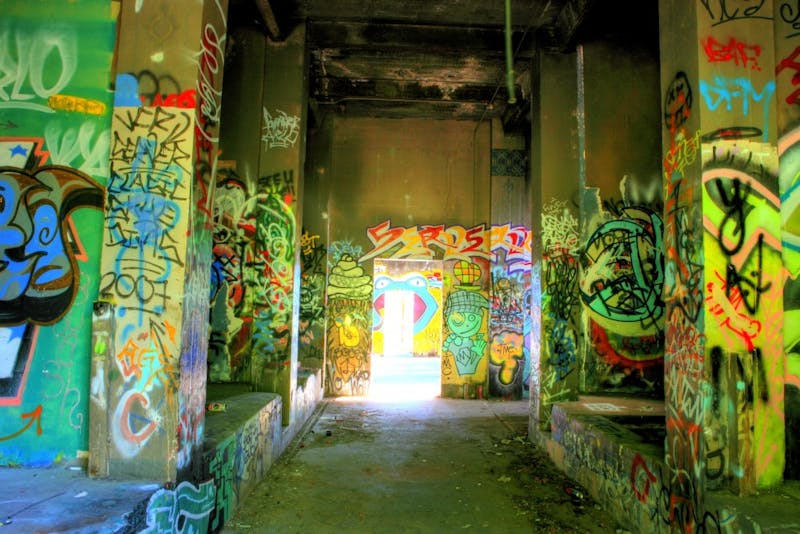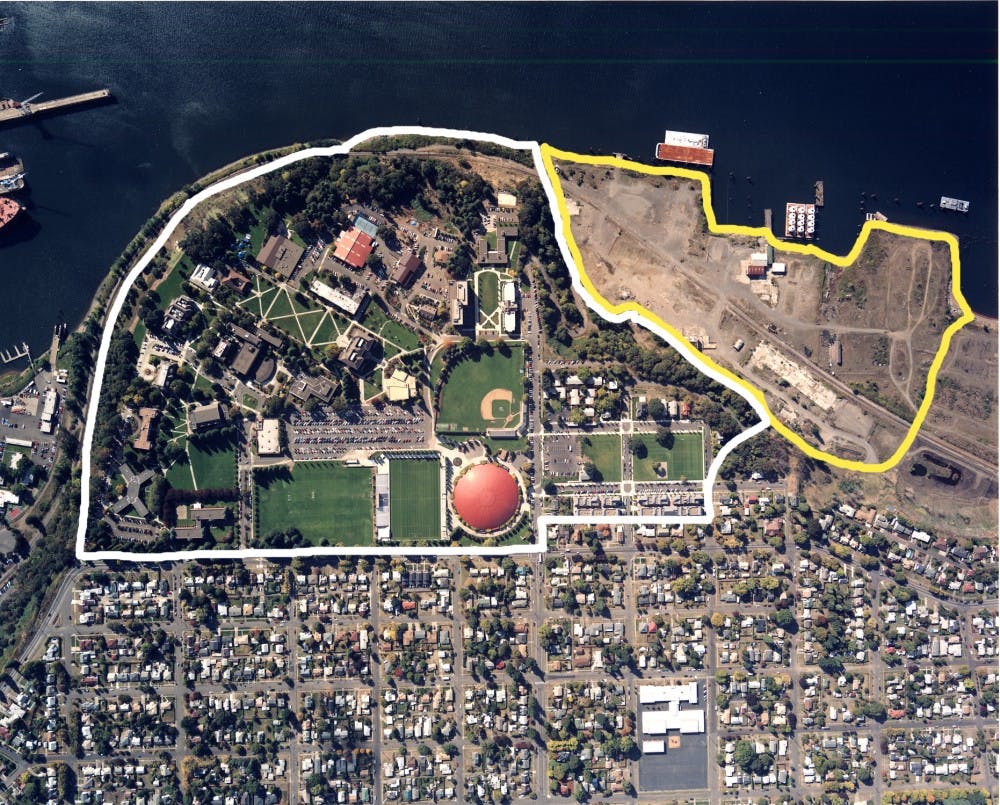Intramural athletic fields, a tennis center, physical plant headquarters and a boathouse might seem disconnected at first, but in ten years they could have more in common than you might think.
They’re all part of a long-term plan to move them down to River Campus, according to Jim Ravelli, Vice President of University Operations.
Within the next 10 years, Ravelli said the University of Portland is hoping to further develop the 35-acre parcel that is now home to a parking lot, piles of rubble and remnants of days gone by.

A Messy History
Not long ago, what students now know as the River Campus was home to a punk landmark: a grungy, graffiti funhouse free of rules and regulations that skaters from around the country knew by many names. Officially named Triangle Park, the area was also known in the skating realm as Popsicle Land, Creosote Factory, SuperFun Site and, perhaps most infamously, as Pirate Town.
From about 2006 to 2009, skateboarders, bikers and graffiti artists alike rolled into Pirate Town, located on the Portland Harbor at the base of the Waud Bluff, to engage in all sorts of activities, many of them illegal, inside of the property’s abandoned mills, factories and warehouses. The Portland Mercury reported that vampire films were screened on the cement walls of an old factory there, BMX wars took place and graffiti artists took to the walls to showcase their talents.
But it was also the site of drug deals, rapes and a pornographic filming.
“It was not a very nice place,” said Ravelli of Pirate Town. “I wouldn’t have suggested anyone go down there.”
But before becoming a nationally-known punk icon, the Department of Environmental Quality reports the property had nearly 50 different industrial uses. From the early 1900s to its latest industrial operation in 1986, different companies came and went, leaving behind them a trail of contaminants in the soil, groundwater and sediments.
Its most recent industrial use was by Riedel International, a major tugboat and barge company, from 1970 to 1986. A collection of tugboats, barges, dredges, floating cranes, construction equipment, repair shops and offices filled the harbor below the Bluff.
In Dec. of 1986, the soil, sand and groundwater at the site was determined by the DEQ to contain elevated levels of toxic materials including arsenic, lead, copper and nickel, among other things.
Cleaning it up
Nearly 15 years later, the Environmental Protection Agency placed the stretch of harbor from Sauvie Island south to the Fremont Bridge on the National Priorities List, declaring it a superfund site.
The DEQ worked to clean up the site from 1987 to 2008, but some hotspots of contaminated soil remained.
The University of Portland purchased the land for $6 million in 2008. They were expected to remove the soil hot spots, cap the remaining soils that were found to be at above-risk level for contaminants, and revegetate the shoreline.
But the first order of business was bulldozing the buildings that housed the DIY skateparks.
Fans of Pirate Town lamented. The place they’d built up into a punk wonderland was swiftly demolished.
The University contributed $3 million to the EPA for clean-up which they started on Aug. 1, 2012 and completed in 2013.
In store for the future
The road to a thriving River Campus is in sight.
The University took the first steps at developing the River Campus in 2015 with a 108-space parking lot, which can now be accessed by University shuttles from the main parking lot during the weekdays.
Ravelli said he expects the eventual construction of athletic facilities and physical plant headquarters on the River Campus to take place within the next two to 10 years, which he says will free up the main campus to expand its academic mission.
Ravelli said residences will never be built on River Campus because of institutional controls that the EPA has placed on the site.
“We can’t house students down there and we can’t grow things,” Ravelli said. “That has largely to do with pockets of some contaminated soil down there. Those have mostly been removed, but out of abundance of caution they don’t want people living down there.”
In the 30 years since it was last used as an industrial site, it’s safe to say that the property has come a long way. Plants and animals now live on the land that was once littered with toxins.
River Campus is something future students can look forward to using for something other than the annual Riverboat event.
“I think it is a neat long-term project for us,” Ravelli said. “That’s clearly where we should be headed. To house and develop that property so we can take areas up here and expand our academic mission and then use River Campus for other non-core services.”








